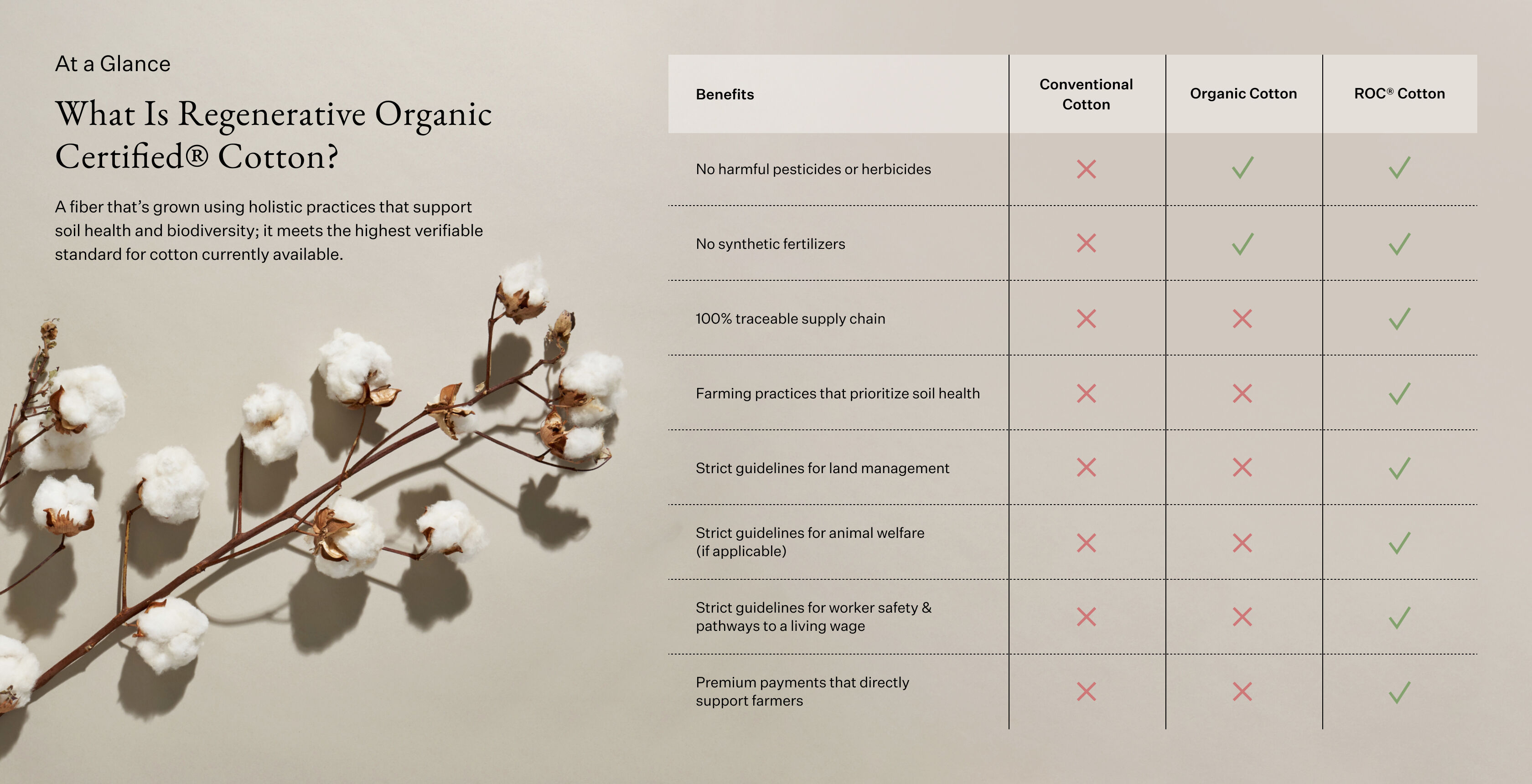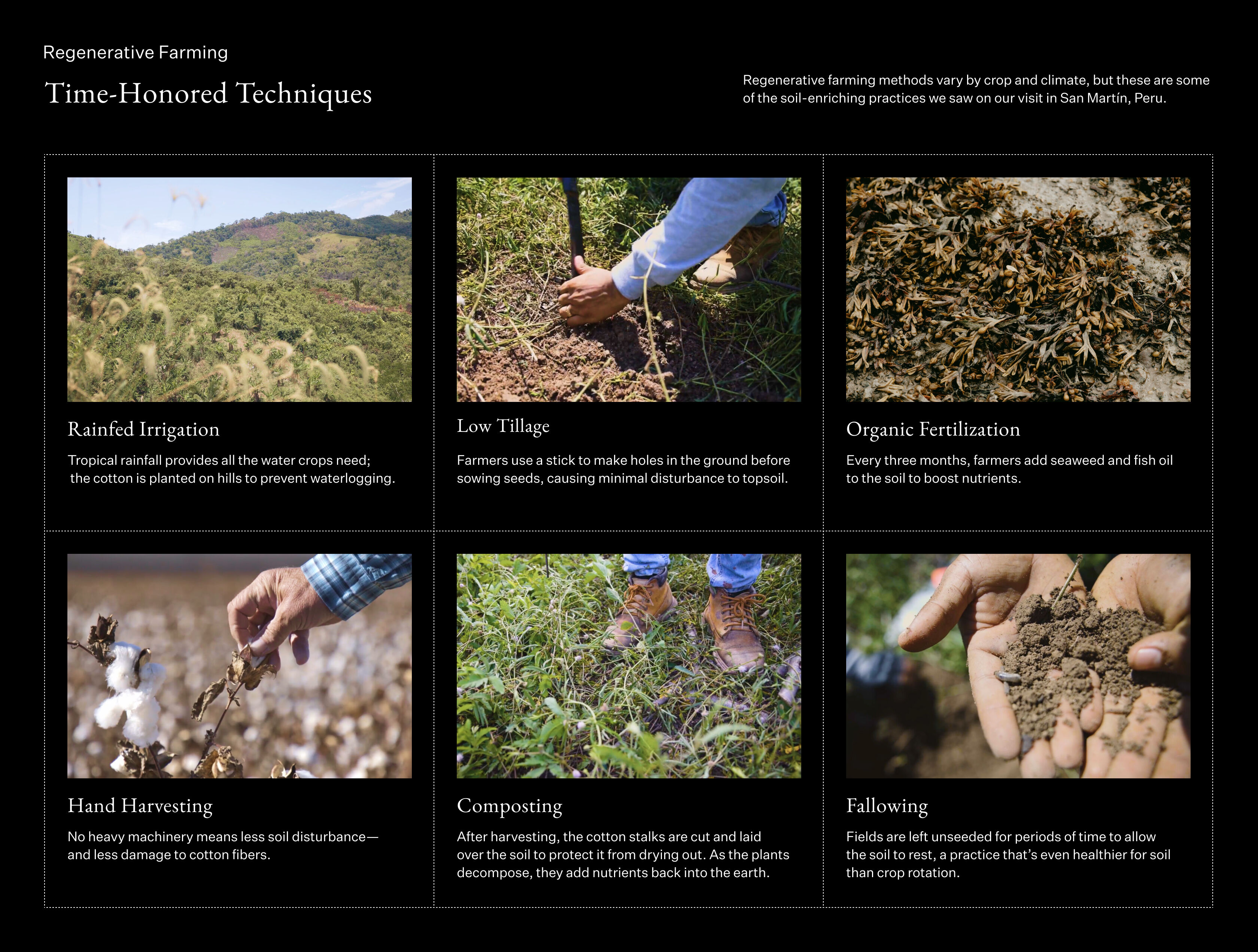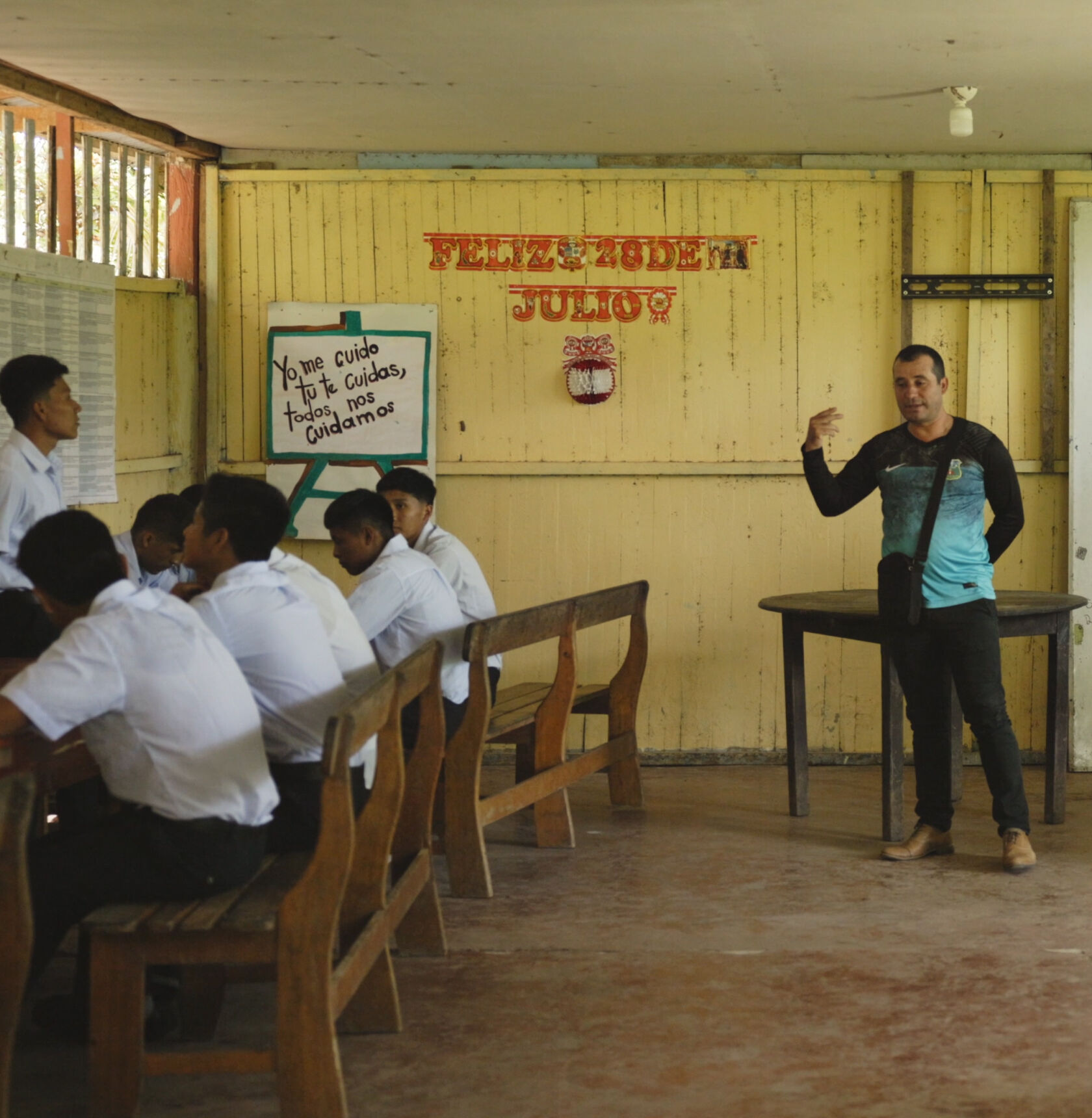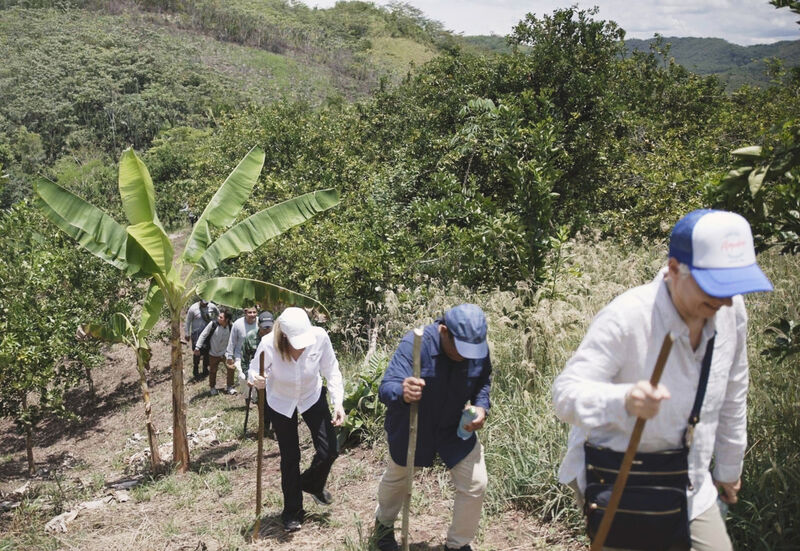Growing Better All the Time: Our Regenerative Organic Certified® Cotton
100% of the cotton on our line is organic. We can do better. We’re working toward a higher standard—Regenerative Organic Certified® cotton that nurtures soil health and biodiversity.
A brief history: Eileen started her company forty years ago with a focus on natural fibers—but ultimately realized that natural was not enough. In 2004, we launched our first organic collection. In 2014, we doubled our efforts to source organic materials. Currently, 100% of the cotton on our line is organically grown, and while we’re proud of that progress, we now know we have an opportunity to do even better. “We’re on a journey of continuous improvement,” says Inka Apter, Director of Material Sustainability & Integrity, “and Regenerative Organic Certified cotton is our new North Star.”
Not only is Regenerative Organic Certified cotton completely traceable from the fields to the factory and grown without hazardous pesticides or herbicides, it goes a step further: It’s cultivated using farming methods that enrich the soil. Equally important, it supports the well-being of farmers and surrounding communities. For us, the program isn’t just another certification—it’s a holistic way of thinking that puts the health of people and planet first.

Impact on the Land
Regenerative agriculture starts with dirt—after all, soil is the source from which all life springs. Conventional and even organic farming can deplete soil over time, which threatens the complex balance of natural systems that give us food to eat and materials to make clothes and build homes. In contrast, regenerative farming actually helps add nutrients back into the soil. The benefits are numerous: Healthier soil can reduce runoff and erosion; improve water retention and drought resilience; provide a habitat for pollinators; and keep the bacteria, fungi and parasites that cause plant disease in check. Most important, healthy soil has the potential to absorb carbon from the atmosphere, thereby reducing greenhouse gas emissions—a key component in the fight against climate change.
Regenerative farmers use time-honored methods such as crop rotation, integrated pest management and cover cropping to support the health of the ecosystem—it’s a return to the holistic principles promoted by indigenous communities for thousands of years.
“What has surprised me the most over the years of working with regenerative organic farmers is just how quickly the land rebounds. Normally, it takes nature 500 to 1000 years to build one inch of topsoil. But if we apply these practices, we can build healthy soil in a matter of a few years.”
–Elizabeth Whitlow, Executive Director, Regenerative Organic Alliance
Impact on Farmers
Cotton cultivation supports an estimated 100 million farmers and families worldwide. It’s a tough business—and one without guarantees. As global temperatures rise, growing seasons in many regions are getting shorter and shorter. At the same time, incidents of crop failure are increasing due to extreme weather, pests and plant disease, which means many growers are caught in a relentless cycle of debt. Regenerative farming is one way that farmers can improve their livelihoods.
“The Regenerative Organic Certified program is built around this pillar of social impact,” says Inka. “It’s one of the things that really excited us about this project.” In addition to promoting practices that can improve crop yields and profitability, the program minimizes financial risk for farmers. At the beginning of each growing season, brands or cooperatives commit to buying a farmer’s entire harvest up front at a set price. If the harvest falls short or the market price for cotton dips, the commitment still stands, ensuring farmers receive a reliable income.
Premiums are another critical way the program supports growers. “By participating in Regenerative Organic Cotton projects, farmers benefit from the additional 10% premium that brands like us pay directly to them,” explains Inka. “The funds don’t go to the brokers or spinners or other stakeholders in the supply chain. They’re intended to be used by farmers and directed toward projects that are of value to them.” Those initiatives can include anything from new farming equipment, childcare services or a community soccer field.
“When humans are being treated fairly and earning a living wage, they can live in the communities where they work...and they can raise healthy children and their children can get an education. Looking at things in this very holistic systems approach is how we’re going to have better outcomes for the entire planet.”
–Elizabeth Whitlow, Executive Director, Regenerative Organic Alliance
Case Study: Our Peruvian Regenerative Organic Certified® Cotton
In 2022, we traveled to rural San Martín in Peru to see the first crop of regeneratively grown cotton in the region. Since then, we’ve continued to convert many of our beloved fabrics to Peruvian Regenerative Organic Certified cotton—and to add new stitches and finishes in this fiber to our line.
A New Way Forward
In the 80s and 90s, residents in San Martín were subject to guerilla insurgencies and cartel violence (the tropical climate that’s ideal for growing Pima cotton is also ideal for cultivating coca leaves). In the years since, farmers have faced economic hardship with little government outreach. Today, Algodón Orgánico Peru (AOP), a certified B Corp, is working directly with growers to help them generate an alternative source of income.
AOP employs a local field team that provides hands-on support to farmers as they transition their fields from conventional to organic or Regenerative Organic Certified—the program has even signed up residents with no prior growing experience. The team shows smallholders how to sow seeds, manage pests and harvest crops in ways that nurture the land. Farmers also learn how to test the soil using simple tools—a stick to measure soil compaction, a water bottle to test porosity, a trowel to dig for beneficial insects.
Although it will take at least 5 years for scientists to fully measure the impact of regenerative farming on the land, the initial data is encouraging. Miguel Grimaldi, AOP co-founder, sums it up: “The soil in San Martín is so healthy, you can eat it.”

A Community-Driven Approach
Behind the success of the program in San Martín is a wider effort to promote regenerative agriculture. AOP works closely with local priests, regarded as trusted advisors in the community, to help spread the message about the benefits of the project. Priests are also instrumental in teaching young farmers about conservation and sustainable agriculture—in addition to math and writing, the regional parochial school encourages students to conduct field research. As a complement to their coursework, students participate in reforestation projects funded by the church, AOP and a local nursery. To date, the group has planted over 150,000 mahogany and eucalyptus saplings, with plans to add a wider variety of trees in the future.

From Peru to You
When you buy pieces made from our Peruvian Regenerative Organic Certified cotton, you’re supporting a program that goes beyond farming. Your purchase helps make a positive impact on soil health and biodiversity, provides opportunities for sustainable development and empowers the next generation of land stewards.






















